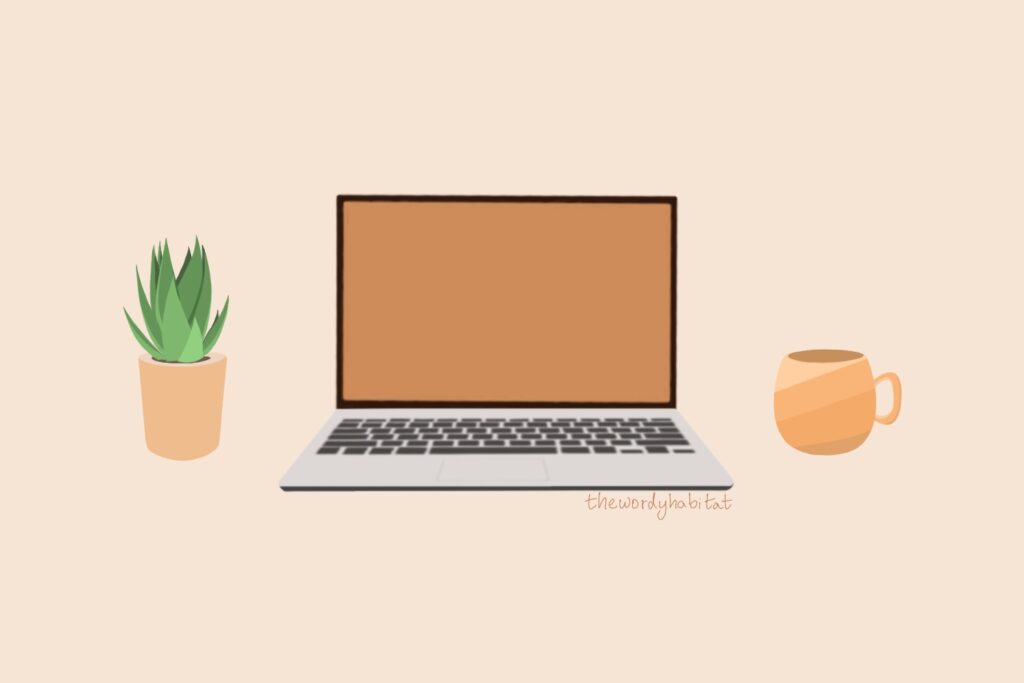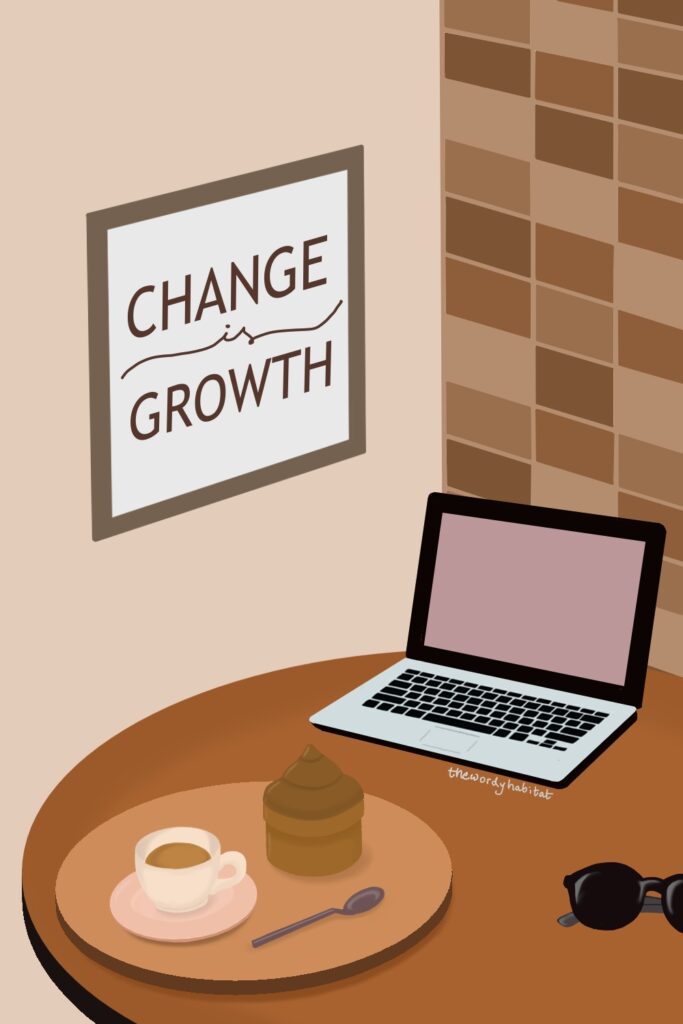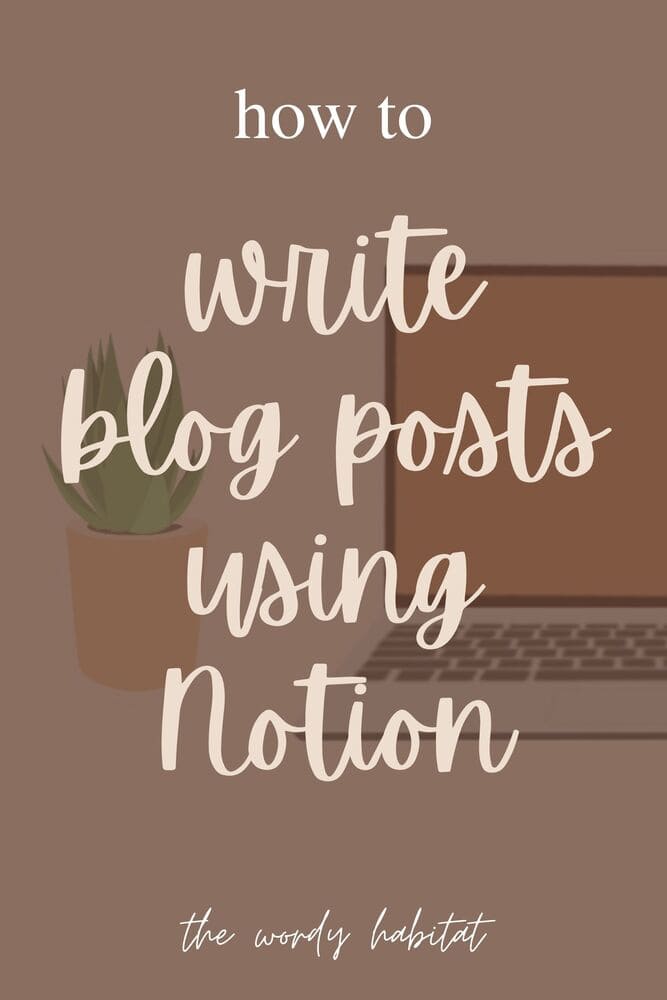
Planning and drafting blog posts take a lot of time. While it looks simple, there are multiple small steps to do in order to produce a good blog post that ticks all the boxes. My process has changed many times during my blogging journey but my current process with Notion is definitely the best.
Notion allows me to streamline my blog post writing process so that I can consistently publish great blog posts. I don't miss anything in my process now because it is laid out neatly. I can also easily look at the entire idea/concept and frame the post well.
Many bloggers (maybe you too!) are already using Notion for organization and hence, I'm not going to focus on that. I'll be talking about only drafting/writing blog posts in this post. Oh and I'm also going to be sharing a couple of Notion blog post templates to make things easier for you!
Note: this post is not sponsored by Notion. I wish haha.
what is Notion?
Notion is a free online organizational tool that allows a ton of flexibility and customization. Everything that you would need in an organizational system like tables, notes, tasks, etc., Notion has it. Hence, it is like a one-stop-shop for everything.
Notion is made up of components that can be linked or grouped together in pages. While it may take a little time to get used to and set up, it pays off in the long run by being very convenient and useful.
It is available as a website and mobile app so we can access it anytime from any device.
how to write blog posts using Notion
Let's go step-by-step! You can use this as a guide and set up your Notion while reading this post as well.
Otherwise, you can simply read through and use the Notion blog post templates that I've made for you!

1. decide your blog post writing process
If you started blogging recently or write blog posts on the fly, you might not know your process by parts. Take a few minutes to figure out your process and write down the different stages.
For example, my blog post writing process goes like this:
ideation -> writing -> illustrating -> checklist tasks -> scheduled
Your process may change over time depending on priorities and lifestyle. Before I rebranded with illustrations of my own, I didn't have "illustrating" in my process. But the stages generally stay the same for a long time.
2. make a Kanban board with the different stages
If you have not tried using Kanban boards before, get on it ASAP! It is one of the easiest ways to organize your work and quickly see where you are at. It is especially helpful if you work on multiple posts at once.
Making a Kanban board with all the stages in your process makes sure that you don't miss any stage before publishing your post.
Before using a Kanban board, I used to frequently forget to do my checklist tasks. Now, I can clearly follow a process and not miss anything, and hence every post comes out well.

3. decide your requirements
Most blog posts require some resources or an outline before you start writing them. Different types of posts can require different things too.
Note down what you generally require or keep in mind before you start writing a post. We'll use these things to set up a custom template.
For example, here are a few generic things that most bloggers require:
- title ideas
- notes/outline of the post
- links to add in the post
- articles to refer to when writing the content
- quotes to add in books reviews
- buy/affiliate links
- images
- videos to embed in the post
You might have the habit of realizing these things while writing blog posts. If so, make this list the next time you write a blog post. Take a minute to notice what all you need to look up or what external factors pause your flow of writing.

4. make a template!
Make a new template with whatever name you like and add sections for each of your requirements. Do try different layouts with the sections so that you get the best one for you. This template is NOT for filling in your blog post content. It is to support your writing in any way required.
Having a template eases your process by jump-starting your ideation process. You can open a new page, choose the template, and immediately have spots to fill in things.
This way, you will have all that you need ready before you start writing the post. You won't have to go looking for things that will end up breaking your creative flow. The only tab you need to have open is the Notion tab.
This also helps in determining if the post idea is a good one. You can quickly flesh out the idea in the template with post ideas, what images would go with it, what category it would come under. And hence you can easily determine if you want to write it or scrap it.
I would suggest making the template such that it flows from beginning to end of a blog post. For example, have things like title and featured image ideas at the top, then notes on the post, other images and links after it, and checklists at the end.

5. add checklists to your template
Checklists are very important in order to not miss anything. It is easy to forget small things like adding alt texts for images, setting the featured image, adding social media links, formatting etc.
Having checklists in place to tick off for every blog post idea will make sure that you don't miss any task. Some example checklists are pre-publish tasks, post-publish tasks, and SEO optimization tasks.
Add the lists that you would like to have to the template so that you have to check them off for every blog post. Consider your blog post "done" only if all of these are ticked.
Whether you do these before, during, or after writing is your choice. Just do them sometime!
6. start using your Notion setup to write blog posts!
Now that your Kanban board and template are ready, you can start using them!
The next time you have a blog post idea, make a new page with the template and simply start filling out the sections. Since there are multiple sections showing what you need, you will come up with ideas for everything. Simply seeing the sections will prompt you to think about them. This way, you can have an entire post concept in a few minutes.
You may want to tweak the template for the first few times that you use it, and that is normal! Edit until you have the perfect blog post template.
If you write blog posts that require wildly different things, make a template for each category! I used to have different templates for my discussions, book reviews, and Kdramas.
I'm sure that just by using a Kanban board and templates to keep track of everything related to blog posts, you WILL notice a difference in your content. So go ahead and start using them!

Notion templates for blog posts
If you have no idea where to start, are not sure about what to include in your templates, or simply want a Notion blog post template ready to use—I've got you covered.
I made a couple of Notion templates that you can use. One includes sections for SEO and the other doesn't. They are both quite generic to work for all bloggers so feel free to take and edit them to fit your process.
If you are already a part of the inner circle, you can directly access them in the resource library by using the password. Otherwise, you can sign up below to get instant access.
[convertkit form=2173655]
why I like to write blog posts using Notion
While every stage in the Kanban board and every section in my template has its advantages, I mostly love this system because it makes ideation easy and better.
I come up with blog post ideas as a whole. I think of titles, purpose, content outline, and category at the same time. So when I'm filling in the templates, I fill multiple sections very quickly in order to get my ideas down. They're not even full words or sentences. I just note words that make sense and flesh it out later.
Before, I had to figure out what to write about during ideation. Because my ideas are not only content. I think of the category, marketability (will readers want it), keywords (if I want to rank on search engines), inter-linking (can I link it with other posts of mine), and more.
Having a standard template (I use only one for all posts) has made it easier for me to come up with ideas. Just seeing the different section headings makes me think about them. So I come up with a barebones concept and make it a good one later.
This also helps me turn an abstract concept like "blogging with Notion" into specific ideas like "writing blog posts with Notion". It is easier to see what topic to write on based on ideas and outlines.
If you're curious, you can check out my Notion tour that I filmed back when I first set up my Notion. It has changed a lot since then, though. Let me know if you'd like to see an updated tour along with a full explanation of my blog post writing process!
I also love Notion because I use it to organize everything related to my blog other than writing like newsletter planning, blog maintenance, and more. It's so helpful.
endnotes
Everyone's process is different and what specifics work for me may not work for you. I deliberately kept this guide generic because the specific stages and sections depend on what process you follow.
You can also use this to set a process if you don't already have one. Think about the process that you would like to follow, based on what you want to prioritize.
If you have any doubts, need help or would like to discuss with someone, feel free to DM me on Twitter or Instagram.

be wordy with me!
Do you have a standardized system for writing blog posts? How do you plan your content? Do you use Notion already?
If this post was helpful, please consider buying me a coffee in appreciation! ☕


Thank you for sharing this! I love using Notion! All my blogging-related stuff is saved on Notion (schedule, planner, affiliate, etc). It really helps me to stay focus and keep everything in one place. But I still enjoy using google docs to write a blog post 🙂
You're welcome! Glad you're enjoying it! I still prefer to write on the WP block editor itself, but use Notion to draft and keep everything in one place. It's so handy!
In all honesty, this isn't something I would use personally to write blog posts as I'm so set in my system now and it works so well for me BUT I've heard great things about Notion and this is an excellent option for anyone looking for a better structure for writing their content!
If you're in a set system and it wirks for everything you need, it's best to stay and not change. But yes, for anyone looking to set one, Notion is great ?
I am OBSESSED with Notion, but never planned my blog posts on it. I have a content calendar, but wow I need to try out these templates ASAP. They seem like something I can really use! Great post!
Thank you, Celina! Do try drafting posts on Notion, it may just be what you need ?
This is a great way to use Notion. I personally don’t use it but I can see why people would use it to be more organised. Thank you for sharing.
Lauren
Thank you!
This is my first time hearing about notion and it sounds lovely! I'm gonna check it out, wouldn't mind having something else having my checklists for my blog. Great post!
TheQuietGirl | http://www.quietgirlblog.com
Thank you, Anissa! Notion is very helpful, I highly suggest trying it out ?
Great post and I enjoyed reading about your post writing process! I still haven't finished setting up my Notion and tend to use my spreadsheets for planning while writing my posts directly in WordPress. I have block templates set up for each of my post types, which keeps the formatting time down and helps keep my posts consistent.
Thank you! Having block templates must help a lot! All of my posts don't have the same format so I just go for a consistent planning process through Notion.
Great tips and tricks! I haven't used Notion before but I've heard plenty about it and everyone seems to recommend it. Definitely seems like an app I need to get into!
Thank you! Notion is a saviour haha. Do try it out!
This is so systematic! I also use Notion, but in a less rigid way that accommodates my freewheeling style. Ever since I started using Kanban boards and specific checklists, my life has improved massively ?
Thank you! My memory is trash so having a set template and checklists in place helps concentrate on the content haha. Notion is totally a saviour
Sumedha, I love this post, it's so helpful! I already use Notion to for my blog but this will be great for post-specific planning. Have a great day!
Thank you, Diya! Hope this helps!
Notion is my favourite app! And that says a lot because I am so not tech-savvy or anything. Seriously, my whole life is in notion. Nice to see a fellow notioneer!
Glad to know that Notion helps you too!